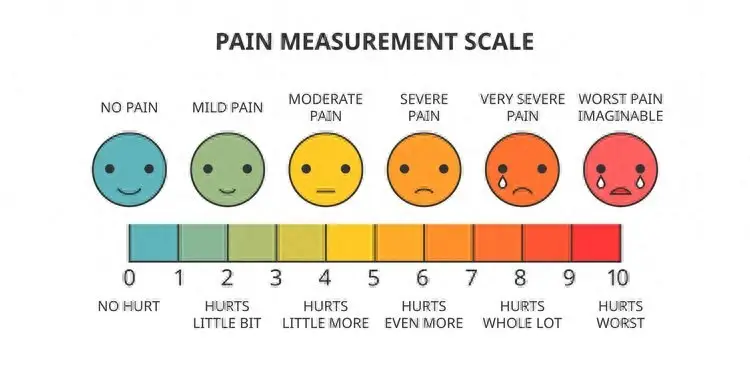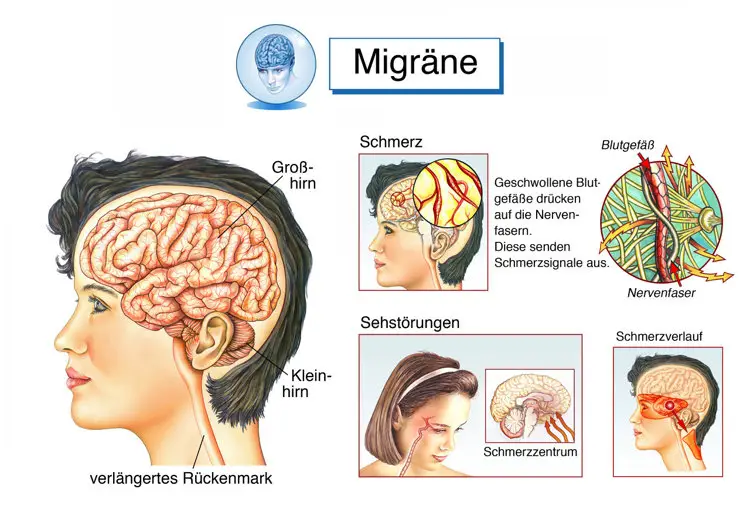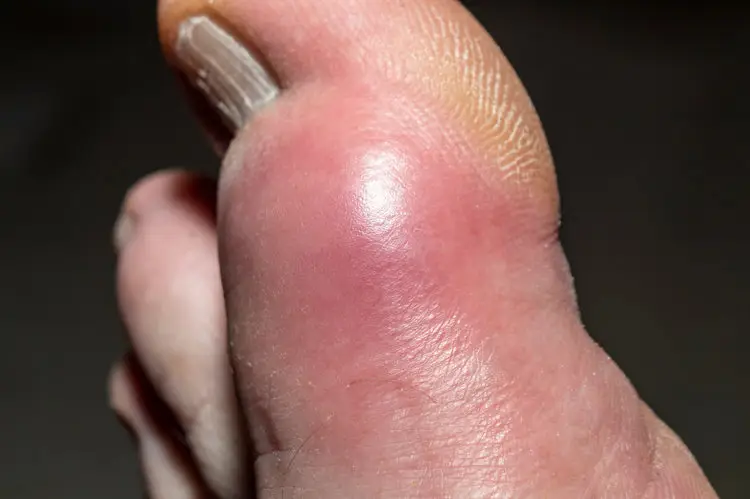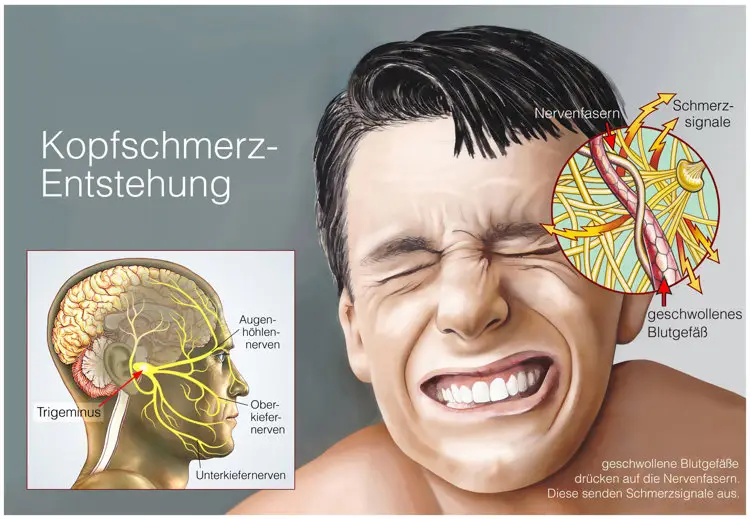I. Can pain be measured?
As early as 2018, the International Classification of Diseases (ICD-11) recognized chronic pain as a disease. The World Health Organization also states that pain can be acute or chronic. When pain persists for three months or longer, it is considered "chronic pain."
Simply put, chronic pain is primarily caused by abnormalities in the nervous system. Pain, as a sensory perception, plays an important role in helping to mitigate unexpected risks. However, some people may experience changes in their peripheral nervous system due to illness, which can trigger persistent firing of pain neurons. Some patients, after undergoing surgery, experience central sensitization, misinterpreting common touch sensations as pain, which in turn causes them to suffer endless agony.

Of course, pain is also graded. Clinically, it's rated from 0 to 10, with 10 being the highest level a person can tolerate.
Many people may try to endure pain, believing it will pass. However, some pain can be a sign of illness, and delaying treatment can worsen it. It's best to seek medical attention promptly if the pain exhibits the following changes:
- Increased frequency and duration of pain are often signs of a worsening illness.
- Pain can also vary. If a sharp, stabbing sensation suddenly changes to a dull ache, this change in pain quality can also signal an abnormal medical condition.
- Sudden onset of pain that is difficult to relieve and persists for an extended period is also recommended.
- Long-term, unexplained pain that is ineffective with common pain medications should also be evaluated promptly.
Therefore, when it comes to pain, don't assume you can just endure it. Remember, enduring it for a long time can lower your pain tolerance. As the condition progresses, you may miss opportunities for simple treatment, leading to increasingly complex treatments and potentially causing more far-reaching health risks.
II. What's the Most Painful Illness in the World?
When it comes to pain, many illnesses probably come to mind. Indeed, clinically, pain caused by illnesses is not uncommon, but some can be downright painful. Someone compiled a list of the world's six most painful illnesses—congratulations if you don't get one!
NO.6 Migraine
I'm sure everyone has experienced a headache at some point, but adding the word "migraine" to the word "migraine" makes it even more difficult. A migraine can range from a mild throbbing pain in the temple to severe nausea and vomiting, with the feeling of wanting to flip your head open. The pain can be unilateral or bilateral, accompanied by nausea, photophobia, and noise intolerance. The duration varies, potentially lasting for hours or even days.

Unlike secondary headaches caused by trauma or tumors, migraines have no clear cause, and therefore no targeted clinical treatment.
Because many people habitually attribute headaches to poor rest, they simply endure persistent migraine attacks. Some even avoid seeking medical attention within a year of their onset. Even when they are aware of the need for testing, migraines are poorly diagnosed and easily confused or misdiagnosed with conditions like sinusitis and eye strain. Consequently, the correct diagnosis rate for migraines in my country may be less than one-fifth.
In 2021, China compiled statistics on the number of years of life lost due to non-fatal diseases. Migraine ranked second, second only to type 2 diabetes, accounting for a total of 6.9882 million years of life lost.
NO.5 Gout
The pain of gout is commonly known as "white tiger calendar," meaning it feels like a tiger gnawing at a joint.

The pain caused by chronic gout is generally mild and short-lived, but the affected area may experience significant swelling and warmth. Acute gout, on the other hand, is more intense, with a tearing, lancing, or biting sensation that can last for extended periods, up to 12 hours.
The pain often worsens with each passing night, often causing sleeplessness.
NO.4 Kidney Stones

The pain caused by kidney stones is the most intense of all stone-related diseases. The pain increases in intensity as the number of stones in the body increases. Furthermore, the kidneys connect to multiple urinary tracts, and stones can block them, causing painful urination and incomplete urination. In severe cases, they can also cause severe cramping in the lower back and abdomen.
NO.3 Shingles
Shingles is a skin disease, but it's also one of the most painful, even exceeding the pain of childbirth. During an attack, patients experience a variety of excruciating pains, such as burning, electric shock, cutting, stabbing, and tearing. Even after recovery from shingles, patients may develop post-herpetic neuralgia.
Research shows that 10% to 30% of patients with shingles experience post-herpetic neuralgia. Currently, approximately 4 million cases of post-herpetic neuralgia have been diagnosed in China, and 30% to 50% of these patients experience pain for more than a year.

Therefore, once shingles is diagnosed, it is crucial to seek medical attention and take medication promptly. Often, the more prompt the acute pain is controlled, the faster the herpes outbreak resolves, and the lower the risk of post-herpetic neuralgia.
However, it is important to note that even after recovery from shingles, recurrence is possible. Maintaining a healthy lifestyle is crucial to effectively prevent the risk of recurrence.
NO.2 Cancer Pain
This type of pain is also known as cancer-induced pain. This type of pain often results from the aggressive growth of the tumor and its compression of surrounding tissues and organs, or from the process of cancer metastasis, which can cause pain. It is particularly common in patients with advanced cancer. Severe cancer pain can render patients unable to function independently or perform any activities. Many cancer patients, overwhelmed by the chronic pain, eventually choose to end their lives.
No. 1 Trigeminal Neuralgia
Trigeminal neuralgia, often called "the world's worst pain," is a recurring, paroxysmal, intense neuralgia in the trigeminal nerve region of the face. The pain primarily affects the area around the mouth, inside the mouth, around the nose, cheeks, and forehead. Daily activities such as talking, eating, washing, yawning, and even touching can trigger the pain.
Trigeminal neuralgia is primarily affected by weather and climate change. Once it strikes, the pain is incredibly intense. Because the affected area is concentrated on the face, it's often misdiagnosed as toothache or migraine. However, compared to the persistent, dull, throbbing, throbbing, stabbing, tearing, or bloating pain of toothache and migraine, trigeminal neuralgia often presents with an electric shock, lancing, or tearing pain. It also occurs suddenly, with few or no warning signs.

The trigeminal nerve is located in a unique position, intertwined with multiple blood vessels and nerves. When vascular sclerosis occurs, blood flow impact can damage the trigeminal nerve, causing a nerve short circuit. Therefore, preventing vascular sclerosis is of paramount importance. Maintain a healthy lifestyle, especially for those over 40 years old at high risk. Seek medical attention promptly if you experience any unusual symptoms.
Don't tolerate pain. Be aware of potential medical risks and seek medical attention promptly if any abnormalities occur. Don't complicate simple treatments, as this can only harm your body.

%20--%3e%3c!DOCTYPE%20svg%20PUBLIC%20'-//W3C//DTD%20SVG%201.1//EN'%20'http://www.w3.org/Graphics/SVG/1.1/DTD/svg11.dtd'%3e%3csvg%20version='1.1'%20id='图层_1'%20xmlns='http://www.w3.org/2000/svg'%20xmlns:xlink='http://www.w3.org/1999/xlink'%20x='0px'%20y='0px'%20width='256px'%20height='256px'%20viewBox='0%200%20256%20256'%20enable-background='new%200%200%20256%20256'%20xml:space='preserve'%3e%3cpath%20fill='%23FFFFFF'%20d='M194.597,24.009h35.292l-77.094,88.082l90.697,119.881h-71.021l-55.607-72.668L53.229,232.01H17.92%20l82.469-94.227L13.349,24.009h72.813l50.286,66.45l58.148-66.469V24.009z%20M182.217,210.889h19.566L75.538,44.014H54.583%20L182.217,210.889z'/%3e%3c/svg%3e)